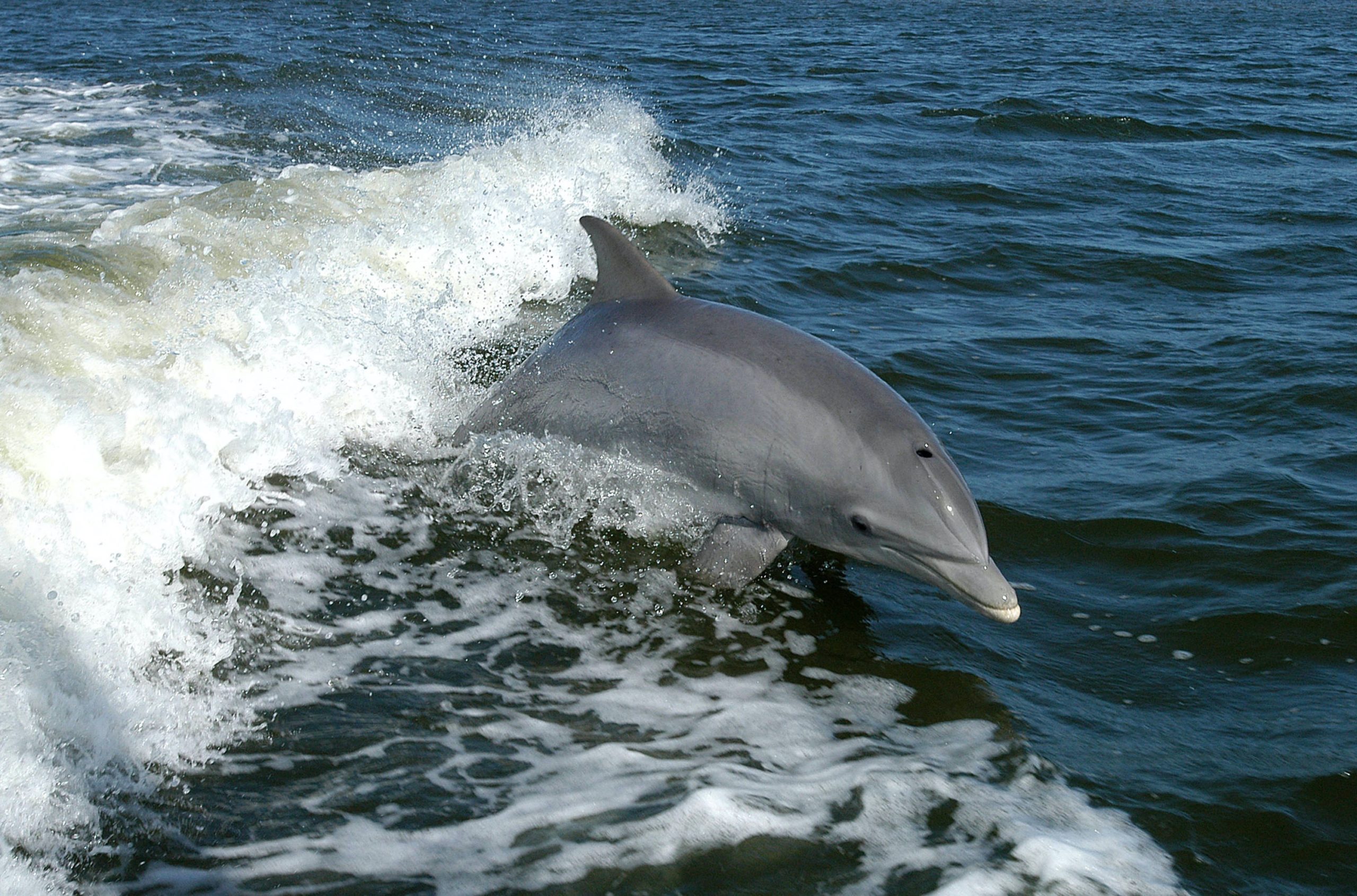
While on an ocean beach run in Amagansett last week, I noticed a large crowd gathered at the water’s edge, including several town lifeguards and Marine Patrol. This was not a swimmer in distress but a somewhat unusual situation involving a marine mammal.
There, tumbling around in the ocean swash, was a live, beautiful and very healthy-looking 9-foot-long common bottlenose dolphin (Tursiops truncates). There were no obvious marks of an entanglement with fishing gear, nor contusions from a boat strike, both among the major causes of injury among marine mammals and sea turtles. It looked, and acted, as if it could easily swim back out to sea, but it did not choose to do so.
At one point, a viscous, light yellow-colored material resembling pus from an infection, oozed out of the dolphin’s blowhole.
Something was clearly wrong.
A call to the Atlantic Marine Conservation Society, based on Long Island, and whose biologists are authorized to deal with marine mammal and sea turtle strandings, advised everyone to stand by and not further stress the dolphin by handling it or trying to move it out beyond the surf. Doing nothing proved to be difficult for some of the onlookers, and we all hoped that the biologists would arrive soon.
Just before the team of biologists arrived, the dolphin made its way through the surf and headed east. But, as anticipated, it came ashore in Napeague later that day, where it perished.
The necropsy revealed that it was a mature male of the larger and darker race of Tursiops truncates, called the offshore race, as it inhabits the edge of the continental shelf and is rarely seen close to shore.
The pathology report is pending, but there were indications of inflammation within the brain tissue.
The common bottlenose dolphin is one of the best-known and best-loved species in the Cetacean (whales, dolphins and porpoises) order, the group of mammals most perfectly adapted to aquatic life. Cetaceans have some remarkable adaptations that allow them to make incredible deep dives (to 9,800 feet for a Cuvier’s beaked whale), attain swim speeds of 35 mph (20 mph for the bottlenose — three times faster than the river otter!), and echolocate to find prey and navigate in low visibility water.
The latter allows several freshwater dolphin species to survive in the murky waters of the Amazon, Orinoco, Indus and Ganges watersheds. In fact, in two species, the eye openings are pinholes that lack eye lenses, restricting vision to simply discerning dark and light. Movement and feeding rely solely on echolocation.
Several species are renowned for their intelligence, trainability, acrobatic playfulness and good survival in captivity. Heading that list is the common bottlenose dolphin. It has been the main star in movies, TV shows and “seaquariums,” and has been trained to assist divers in a variety of tasks.
Dolphins are further classified as Odontoceti, a suborder known as the “toothed whales” (as opposed to the baleen whales). In the case of the bottlenose dolphin, it does not use its teeth to chew its food — in most cases, various fish, squid (a favorite) and crab — but simply uses it teeth to capture and hang onto its meal before swallowing it whole. (I know some people who use that time-saving feeding technique!)
As is the case with our fish- and crab-eating river otter, the bottlenose will hunt cooperatively, herding schools of fish into tight groups or up against a shallow sandbar, where they are more easily captured. It also shares with the otter a reputation for taking time out to play, riding the bow wave of boats and dropping in on surfable waves near shore.
This cosmopolitan species is found throughout the world, in both coastal and offshore waters, with the exception of the cold Arctic and Antarctic areas. It can live up to 60 years, reaching 13 feet in length and weighing 600 pounds.
As with many of the Cetaceans, it has a very low reproductive rate: Its 12-month gestation period, followed by 20 months of nursing its single calf, results in breeding at most every three years.
Although they are one of the most-studied marine mammals in the world, population trends for many of the U.S. stocks remain unknown.